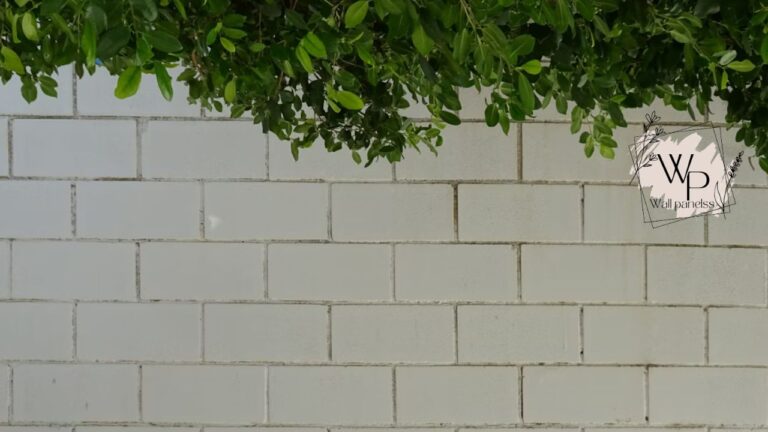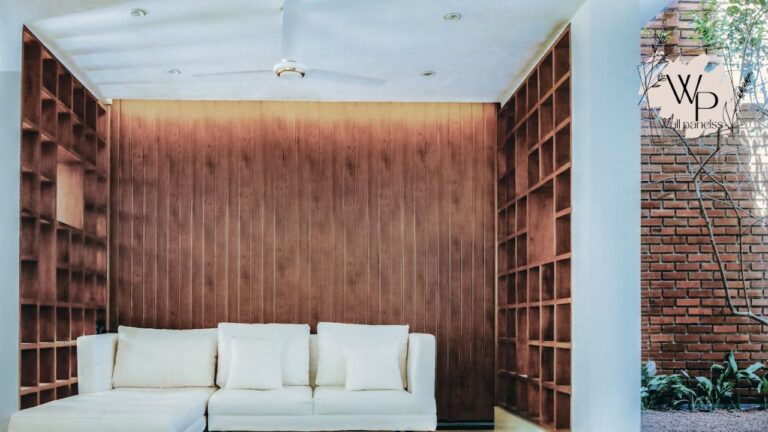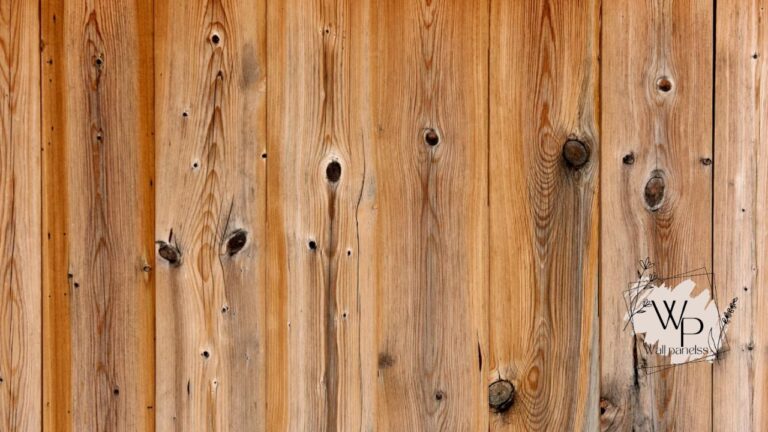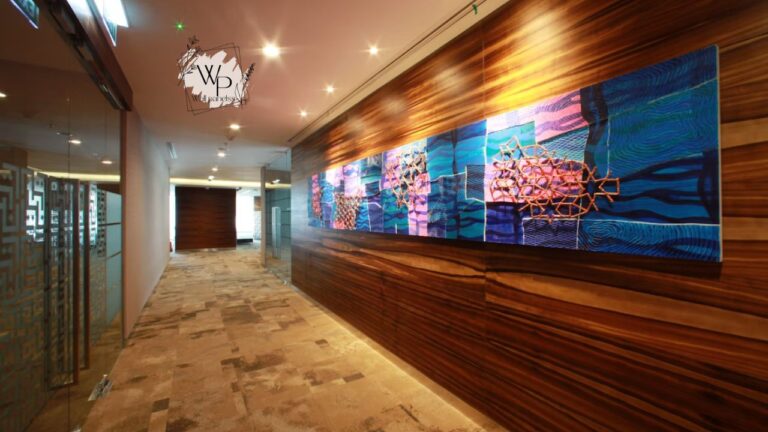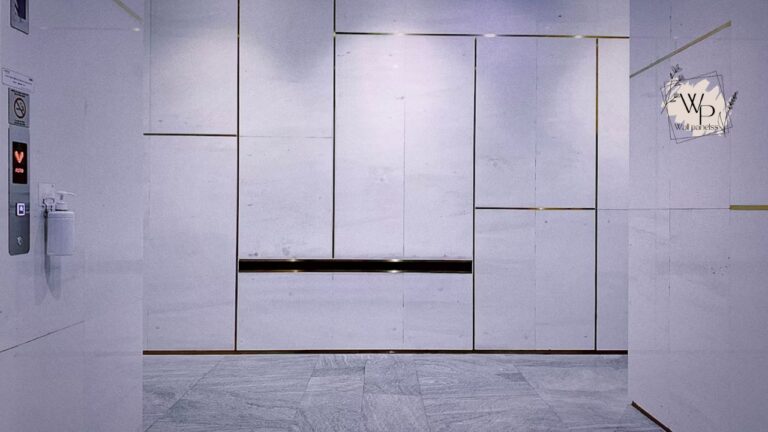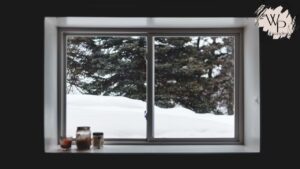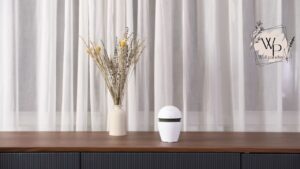Tired of staring at flat, boring walls? You’re not alone. A fantastic wall panel design can completely revolutionize a room, turning a dull space into a breathtaking feature. Forget messy paint jobs or fussy wallpaper; modern wall panels offer a durable, stylish, and surprisingly simple way to inject personality and texture into your home or office.
This guide is your ultimate resource for exploring the world of wall panels. We’ll delve into the various materials, styles, and creative applications that can elevate your interior design. Whether you’re aiming for a cozy, rustic feel or a sleek, futuristic vibe, the right wall panel design is out there waiting for you. Let’s uncover how you can make a powerful statement that reflects your unique taste.
Wall Panel Design at a Glance
Before we dive deep, here’s a quick overview of the most popular wall panel options to help you get started.
| Panel Type | Common Materials | Average Cost (per sq. ft.) | Best For | Key Feature |
|---|---|---|---|---|
| 3D Panels | Gypsum, MDF, PVC, Bamboo | $2 – $15 | Feature walls, media centers | Creates depth and shadow play |
| Shiplap/Wood | Pine, Cedar, Reclaimed Wood | $3 – $12 | Rustic, coastal, farmhouse styles | Adds warmth and texture |
| Upholstered | Fabric, Velvet, Leather, Foam | $10 – $30 | Bedrooms, home theaters | Sound absorption, luxurious feel |
| Slat Wood | Oak, Walnut, MDF with Veneer | $8 – $25 | Modern, minimalist, Japandi | Linear elegance, acoustic benefits |
| Metal Panels | Aluminum, Steel, Copper | $15 – $50+ | Industrial, contemporary | Durability, sleek metallic sheen |
| PVC Panels | Polyvinyl Chloride | $1 – $5 | Bathrooms, kitchens, basements | Waterproof and easy to clean |
Why Wall Panels are Dominating Interior Design
The surge in popularity for decorative wall panels isn’t just a fleeting trend. Homeowners and designers are increasingly turning to them for their incredible versatility and transformative power. A well-chosen wall panel design acts as more than just a wall covering; it becomes a piece of architectural art.
This shift is driven by a desire for more personalized and dynamic living spaces. A 2023 interior design report noted a 45% increase in searches for “textured wall solutions,” with wall panels leading the charge. They offer a fantastic way to break up the monotony of a room and create a focal point that instantly draws the eye.
The Emotional Impact of a Great Wall Panel Design
Think about how a room makes you feel. A space with rich wood panels can evoke a sense of comfort and security, like a cozy mountain lodge. In contrast, a room with sharp, geometric 3D panels can feel energetic and modern. This emotional connection is at the heart of great interior design.
By introducing texture, pattern, and depth, a wall panel design can dramatically alter a room’s atmosphere. It can make a large, cavernous room feel more intimate or add visual interest to a small, simple space. The right choice can genuinely make you fall in love with your home all over again.
Exploring the Universe of Wall Panel Materials
The material you choose is the foundation of your wall panel design. It dictates the look, feel, durability, and cost of your project. Let’s explore some of the most popular options available today.
The Timeless Warmth of Wood
Wood panels are a classic for a reason. They bring an unparalleled sense of warmth and natural beauty to any interior. From the rustic charm of shiplap to the sophisticated elegance of slat wood, there’s a wood wall panel design for every aesthetic.
Slat Wood Panels: The Modern Marvel
Slat wood panels have become an icon of modern and Scandinavian design. These vertical wood strips, often mounted on an acoustic felt backing, offer a clean, linear look that adds texture without overwhelming a space.
- Acoustic Benefits: One of the most celebrated features of slat wood panels is their ability to dampen sound. The felt backing absorbs sound waves, reducing echo and creating a more serene environment. This makes them perfect for media rooms, offices, and open-plan living areas.
- Aesthetic Versatility: Available in finishes like oak, walnut, and black, they can seamlessly blend into various color palettes. A natural oak slat wall panel design brings a touch of Japandi calm, while a dark walnut version feels luxurious and bold.
Shiplap and Reclaimed Wood: Rustic and Full of Character
For those who love farmhouse, coastal, or rustic styles, shiplap is a go-to choice. The overlapping boards create subtle shadow lines that add dimension to a wall. Reclaimed wood goes a step further, offering a unique history and character that new materials simply can’t replicate. Each knot, grain pattern, and imperfection tells a story, making your wall panel design truly one-of-a-kind.
The Dramatic Flair of 3D Wall Panels
If you want to make a bold, artistic statement, 3D wall panels are your answer. These panels feature sculptural, three-dimensional patterns that play with light and shadow, creating a dynamic and ever-changing surface.
Materials and Shapes
3D panels come in a variety of materials, each with its own advantages:
- Gypsum/Plaster: Heavy and durable, these panels can be painted to match any decor and create a seamless, high-end look.
- Plant Fiber/Bamboo: An eco-friendly and lightweight option, these are easy to install and offer a huge range of stunning patterns.
- PVC: Waterproof and easy to clean, PVC 3D panels are an excellent choice for adding a wow-factor to bathrooms or kitchens.
The patterns themselves range from soft, undulating waves to sharp, angular geometrics. This versatility allows you to create a wall panel design that is subtle and serene or daring and dramatic. Imagine a wave-patterned wall behind your bed, creating a tranquil, water-inspired retreat.
The Soft Touch of Upholstered Panels
For a touch of luxury and comfort, nothing beats upholstered wall panels. Popular in high-end hotels and bedrooms, these fabric-covered panels add softness, absorb sound, and create an incredibly cozy and inviting atmosphere.
A Symphony of Textures
You can find upholstered panels in a wide array of fabrics:
- Velvet: For a rich, glamorous look that feels wonderfully plush.
- Linen: Offers a more relaxed, understated elegance.
- Leather/Faux Leather: Perfect for a sophisticated and masculine space, like a home office or den.
An upholstered wall panel design behind a headboard can eliminate the need for a traditional one, creating a seamless and integrated look that feels both grand and intimate.
User Reviews: What People are Saying
Real-world feedback is invaluable when choosing a wall panel design. Here’s a summary of what homeowners and DIYers are saying about different types:
- Slat Wood Panels:“Absolutely transformed our living room! The installation was surprisingly easy, and the acoustic benefit is real. Our TV room echo is gone. Worth every penny.” – Mark S., 5/5 Stars
“I was hesitant about the cost, but the quality of the oak finish is incredible. It looks so high-end and made our entryway feel ten times more welcoming.” – Jessica L., 5/5 Stars - 3D PVC Panels:“I used these for a feature wall in my bathroom, and I’m obsessed! They were so easy to cut and install, and being waterproof is a huge plus. My friends all ask where I got them.” – Chloe T., 4.5/5 Stars
“The only downside is that the seams can be a bit visible if you don’t caulk them carefully. But for the price, the visual impact is amazing.” – David R., 4/5 Stars - Upholstered Panels:“Created a velvet headboard wall in our master bedroom. It feels so luxurious and cozy, and it was much cheaper than buying a huge custom headboard. The sound dampening is a nice bonus.” – Emily P., 5/5 Stars
Spotlight on a Design Innovator: Akuwood
In the world of modern interior finishes, some companies don’t just sell products; they shape trends. Akuwood, a Finnish company, is a prime example in the acoustic wall panel design space. While not a household name with a celebrity founder, its impact on the popularization of slat wood panels is significant.
The Akuwood Story: From Function to Form
Akuwood was founded on the simple principle of combining Scandinavian design purity with functional acoustics. The founders, a group of engineers and designers, noticed a gap in the market. Acoustic solutions were often purely functional and aesthetically unappealing—think gray foam panels in a recording studio.
They envisioned a product that could manage sound beautifully. Their innovation was to mount clean, elegant wood slats onto a recycled acoustic felt. This created a wall panel design that not only looked stunning but also significantly improved room acoustics. Their focus on sustainable materials, like recycled PET for the felt and responsibly sourced wood, resonated deeply with modern consumers.
The company’s success isn’t tied to a single founder’s net worth but to its design philosophy. They proved that practical solutions could also be the most beautiful feature in a room. Their minimalist aesthetic became a cornerstone of the Japandi and modern organic styles, influencing countless other manufacturers and making the slat wall panel design a global phenomenon.
How to Choose the Perfect Wall Panel Design for Your Space
Feeling inspired? The next step is figuring out which wall panel design is right for you. Here are some key factors to consider.
1. Analyze Your Room’s Style
Your panels should complement, not clash with, your existing decor.
- For Modern/Minimalist Spaces: Slat wood, smooth concrete panels, or large-format metal panels work beautifully.
- For Traditional/Farmhouse Homes: Shiplap, beadboard, or reclaimed wood panels will enhance the cozy, classic feel.
- For Glam/Art Deco Interiors: Upholstered velvet panels or 3D panels with bold, geometric patterns will make a stunning statement.
2. Consider the Room’s Function
The purpose of the room plays a huge role in material choice.
- Bedrooms: Upholstered or slat wood panels are excellent choices for creating a serene, quiet environment.
- Bathrooms and Kitchens: Opt for waterproof materials like PVC, acrylic, or specially treated metal panels. Avoid unfinished wood or MDF, which can warp with moisture.
- Living Rooms and Hallways: This is where you can get creative! Almost any wall panel design can work. Consider a dramatic 3D wall to create a focal point or shiplap to add subtle texture.
3. Think About Scale and Proportion
The size of the paneling should match the scale of the room. Large, dramatic patterns might overwhelm a small room, while a very subtle texture could get lost in a vast, open-plan space. A good rule of thumb is to use panels to either create an accent wall or to cover the entire room for a fully immersive feel.
4. Lighting is Everything
Remember that texture is revealed by light. A 3D wall panel design will look completely different in a brightly lit room compared to a dimly lit one where shadows are more pronounced. Before committing, try to get a sample and see how it looks in your space at different times of the day.
Installation: DIY vs. Hiring a Pro
Many modern wall panel systems are designed with the DIYer in mind. Lightweight materials like plant fiber or PVC panels can often be installed with construction adhesive and a bit of patience. Slat wood panels frequently come in large, manageable sections that can be screwed directly into the wall.
However, for heavier materials like gypsum or large reclaimed wood planks, or for a project requiring perfect, seamless joins, hiring a professional is a wise investment. A pro will ensure the panels are securely mounted and flawlessly finished, giving you a truly high-end result for your wall panel design.
Creative Applications Beyond the Feature Wall
While a feature wall is the most common use for panels, don’t let your creativity stop there! Here are some other amazing ways to incorporate a unique wall panel design:
- Ceiling Interest: Covering a ceiling with wood panels can make a room feel cozier and more intimate.
- Modern Wainscoting: Use panels on the lower third of the wall for a contemporary take on classic wainscoting.
- Kitchen Island Cladding: Wrap your kitchen island in a durable and stylish wall panel design to make it a true centerpiece.
- Custom Headboards: Frame a section of upholstered or slat wood panels behind your bed for a bespoke headboard.
- Art Niches: Line the back of a bookshelf or built-in niche with a textured panel to make your displayed items pop.
The right wall panel design is a powerful tool. It has the ability to add depth, warmth, and character, completely changing the story of a room.
Frequently Asked Questions (FAQs)
Q: Are wall panels expensive?
A: It really varies! A simple PVC or plant fiber wall panel design can be very affordable, sometimes even cheaper than wallpaper. On the other hand, custom-milled hardwood or high-end upholstered panels can be a significant investment. There’s truly an option for almost every budget.
Q: Are wall panels difficult to clean?
A: It depends on the material. Smooth surfaces like PVC and metal are very easy to wipe down. Textured surfaces, like 3D panels or reclaimed wood, can collect more dust. A quick pass with a vacuum brush attachment or a soft duster is usually all that’s needed to keep your wall panel design looking fresh.
Q: Can I install wall panels in a rental apartment?
A: Some types, yes! You could create a large, free-standing panel and lean it against the wall like a piece of art. Another option is to mount lightweight panels onto a large, thin sheet of plywood and then fix that board to the wall in just a few places. This minimizes damage and makes it easy to take your beautiful wall panel design with you when you move.
Q: Do wall panels make a room look smaller?
A: Not necessarily. While dark, heavy panels can make a space feel more enclosed, a light-colored wall panel design can actually make it feel bigger. Vertical patterns like slat wood panels can draw the eye upward, creating an illusion of height. It’s all about choosing the right style and color for your space.
Q: Is this just a trend that will go out of style?
A: While specific patterns might ebb and flow in popularity, the idea of adding texture and architectural interest to walls is timeless. Materials like wood have been used for centuries. Choosing a classic material and a clean design ensures your wall panel design will look great for many years to come.
Admin Recommendation
WallPanel Home Assistant Idle: The Ultimate Guide to Smart Home Displays


